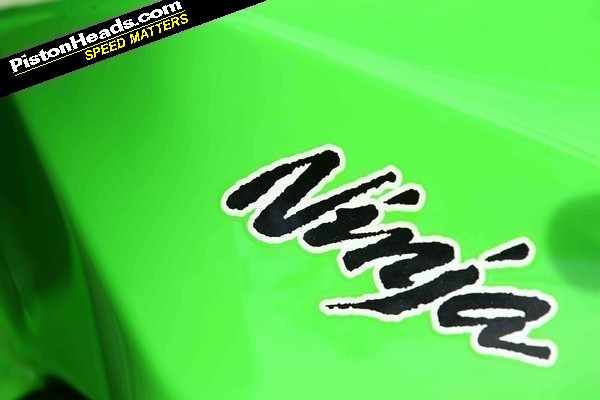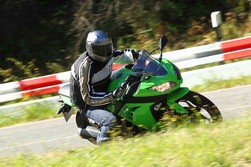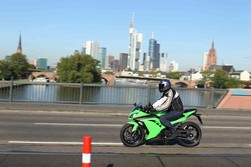PH2: Kawasaki Ninja 300
Is Kawasaki's smallest Ninja the way to go for new riders?

Since its UK debut, the Ninja 250 has proved a surprise hit. With a claimed 33bhp, it fell within the boundaries of power for restricted licence holders - but this wasn’t its only audience. There is a small yet significant section of the motorcycle community that don’t want to go mental on the roads. Commuters, new riders and some female riders considered that a lightweight, stylish bike with enough power to top 70mph to be more than up to the job. And they still do, believe it or not: last year the Ninja 250 almost outsold the ZX-6R.
So why 300?
Things change. As of 19th January 2013, new European A2 licensing laws will come into force in the UK. These will allow anyone with a restricted licence to ride a bike of up to 39bhp. To take advantage of this, Kawasaki has upped the capacity of the Ninja from 250 to 296cc. Although the Ninja’s bore is still 62mm, the stroke has been increased and various internal components redesigned.
The net result is a restricted, licence-friendly 39bhp bike that looks better than ever thanks to a new fairing, chassis, digital clocks and re-designed wheels. Oh, and it also has a slipper clutch with an ‘assist cam’ that reduces the effort at the clutch lever by 25% - but more of that later.
Small bike, big impression
I’ve ridden the Ninja 250 a few times, and I’m not a huge fan. It feels a bit small and unsubstantial and the motor is pretty gutless, even considering its 33bhp claim.
The new 300, however, instantly feels different. The styling updates give the 300 a far more ‘big bike’ feel, while the digital display is classier as well as more functional as it now contains a fuel gauge. I’d like to have also seen a gear indicator, but that’s just me. Yep, despite its small size, the Ninja 300 doesn’t feel too weedy, although when you fire it up the façade slips slightly…
There is no getting away from the fact the Ninja’s engine sounds like a series of wet farts. It’s not inspiring in any way, shape, or form, and I would strongly recommend that owners fit one of Kawasaki’s official accessory Leo Vince race cans.
But sound is one thing, performance is another, and the 300 is a wonderful little mover. The suspension on the old 250 was something of a weak spot due to soft settings that made the bike wobble and pitch through corners. For the 300, Kawasaki have kept the same physical suspension units but altered their damping to provided a far more compliant ride. It’s not hard or harsh, it’s simply had the sogginess removed. This, combined with pegs which are no longer rubber mounted, makes for a sportier ride. You can stir the Ninja into action and have a great time on the back roads, making full use of your corner speed so as not to lose crucial momentum. Although, having said that, the new 300 engine is surprisingly sprightly.
On a motorway the Ninja will happily hold 80mph and push up to over 100mph when required. Experienced riders will start to treat the throttle like an on/off switch after a few miles, but where the 250 was dull and slow, the 300 delivers an acceptable turn of pace. And it does it with a lovely light clutch lever action.
Speaking of which, why a slipper clutch? It’s nothing to do with racing, more safety. A lot of learners crash by shifting down too many gears and accidentally locking the rear wheel. Attempt this on the Ninja and the slipper takes over, gently re-introducing the power when the revs meet the rear wheel’s speed. An excellent safety aid and one I can see appearing on more ‘new rider’ bikes.
Worth a shot?
I didn’t expect to be, but I was actually quite taken by the Ninja 300. It’s not gigantically powerful, but it certainly has enough grunt for day to day use and looks fantastic. Where I would have struggled to recommend the 250 to a new rider, I would happily tell one to take the 300 out for a blast.
Is it worth upgrading to from current 250 riders? I’d say so. The extra capacity, power and handling make the 300 a far better bike, a feeling the new look only enhances.
Specs:
2013 Ninja 300
Engine: 296cc, liquid-cooled parallel twin, DOHC, fuel injection
Power: 39hp @ 11,000rpm
Torque: 20ft.lb @ 10,000rpm
Top speed: 105mph (est)
Weight: 172kg (dry)
MPG: 60 (est)
Price: £4,800 (TBC)
Gassing Station | Biker Banter | Top of Page | What's New | My Stuff






